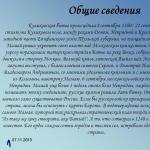Dear visitors!!!
Radio receivers differ in their design and the way they tune to the frequency of the received signal. That is, tuning can be carried out either using a vernier device \to search for the required frequency\, or the frequency search can be performed using a light touch of a finger - with a control panel, which is a separate block diagram \touch control\.
Vernier device-radio receiver

Figure 1 shows the simplest kinematic diagram of the vernier device. This device is familiar to all of you. The search for setting the required frequency is carried out by rotating the wheel /tuning knob axis/. Between the guide wheels, and there are three of them in this diagram, a nylon thread is stretched - in mesh with which there is a pulley. To make this more clear, in clear example, a photograph of this device is provided.
Radio vernier device
Due to the rotation of the pulley, the KPI plates are set in motion. In diagrams for radio receivers, there is such a name as KPE block. The KPE block is a variable capacitor with an air dielectric.
Similar capacitors are found:
with a single-section block;
two-section block;
three-section block.
two-section KPE block
three-section KPE block
Such radio components are well known to you; they are found both in outdated models \USSR radios\ and in modern models radios. In modern models, KPI blocks are more advanced, as is the design of the receivers themselves, and have small overall dimensions.
Design of an air condenser - variable capacity
Let's say, if we take as an example a two-section block \Fig. 2\, this device consists of two capacitors. Accordingly, to designate this radio component, its own graphic image is given \indicated at the top, Fig. 2\. Already, if you read the radio diagram yourself, you will know that graphic designation in the circuit, as shown in the figure, it is a two-section unit of variable capacitance with an air dielectric.
Capacitor designation
If in a radio circuit there is, for example, a value for KPI - C40 9...365, then the radio amateur will already be able to say that this capacitor has a serial number - 40, and the variable capacitance at a full rotation of the rotor is from 9 to 365 picofarads.

Here you should also understand that a variable capacitor with an air dielectric \KPE\ consists of a moving and a stationary part. The moving and fixed parts consist of a certain number of aluminum plates. The moving part of the plates is usually called the rotor, the stationary \fixed part is called the stator.
You should remember the two graphic symbols \Fig. 3\ and do not confuse them where indicated:
designation of a variable capacitor \with an air dielectric\;
designation of the tuning capacitor,
- the required capacity of which is set using adjustment - with a flat screwdriver. Adjustment for the tuning capacitor is carried out by specialists at the factory when the nominal value of the capacitance is established. But if we're talking about about personal ingenuity, then such changes are made ourselves radio amateur.
So, friends, I am directly with you entering the world of interesting and identifiable things, so to speak, I am remembering my former hobby. Follow the section, it will be even more interesting further.
Today I continued making parts for the vernier. I exhausted a pile of paper until I figured out how best to do it all.
From the pulley you need to make an entrance and exit for the cable. The exit will be "distant". To prevent the threads from intertwining, I drilled a 2 mm hole at an angle of 30 degrees so that it would come out near the far side. This will be the exit for the cable. At the second exit of the hole, I milled the platform to the plex, drilled the hole and cut the M3 thread. Screwed in a screw with a small stand. The end of the cable will be tied here, and the washer will prevent it from jumping off.
The photo shows the design of the “exit” for the cable.
With the “input” it’s a little more complicated - you need to install a spring, which will pick up the “slack” of the cable. But this problem was also solved. I milled a groove slightly wider than the diameter of the spring, as well as a platform, in the center of which I cut an M3 thread and screwed in a screw with a through hole in the head.
The photo shows the design of the “entry” for the cable.
The next part is the flywheel assembly. I fiddled with it for a very long time. There was a flywheel from "Latvia", but its design did not suit me. I had to completely redo it. A suitable sliding bearing was also found, but it has a round housing with a diameter of 16 mm. That was the main problem with him. How they managed to secure it can be seen in the photo.
The photo shows details of the flywheel assembly and its “assembly drawing”.
The assembly is visible in the second photo (bottom to top): locking sleeve, getinaks washer, bearing assembly, mounting pad, fluoroplastic washer, flywheel.
The result is this:
The photo shows the flywheel assembly.
After that, I marked the places where the units were attached on the false panel, installed them, adjusted them and tried to assemble the mechanism. To do this, I used a simple, harsh thread (it’s a pity for the cable!). The result is this “mechanism”:
The photo shows a trial assembly of the vernier mechanism.
On the flywheel axis I attached a cable rotation unit from the Latvian VHF unit. I had to shorten it, and since it is made of very fragile silumin, I used a steel bandage to fix it on the flywheel axis. I just drilled it in silumin through hole under the bandage locking screw.
The photo shows the tuning axis.
The photo shows the fastening of the manufactured units on the false panel.
After adjustment and lubrication, the mechanism worked quite well. The axis rotates smoothly, with a slight resistance that is pleasant to the hand. The surrogate arrow moves smoothly, does not stick anywhere, the thread does not “bite” or jump off anywhere. In general, I was pleased.
Again, a “smart thought” that “comes after”...
Already when the mechanism was working, it dawned on me that a rather strong lateral load would be constantly applied to the axis of the variable resistor. “It got there” because I saw that the pulley was slightly “skewed” inward of the future scale. Shaking it lightly with my hand, I saw that the play in the axis of the variable resistor was quite large. This is on the gearbox, with its rolling bearing!
Those. This unit needs to be remade - install a “cond” axis with its own bearing, and somehow flexibly connect the variable resistor axis to it. Something like this (what was at hand).
To accurately tune a radio receiver to the frequency of the received radio station, a vernier is required - a mechanism that converts rotation of the tuning knob into rotation of the tuning element (for example, the KPI rotor) through a relatively small angle. To successfully perform its functions, the vernier must have a sufficient gear ratio and virtually no backlash. The proposed friction mechanism has a gear ratio of about six and is designed to work with a homemade gearbox with air-
stuffy dielectric, described by the author in “Radio”, 2016, No. 12, p. 28, 29 (you only need to place a 6 mm thick gasket between the KPI housing and the receiver chassis). The materials for its manufacture will need sheet fiberglass with a thickness of 1; 1.2; 1.5, 2 and 6 mm (instead of 6 mm thick fiberglass, you can use organic glass or polystyrene of the same thickness), fiberboard 6 mm thick, a strip of transparent organic glass 1.5...3 mm thick, a piece of thin-walled brass tube external
with a diameter of 7 mm (the author used the elbow of a telescopic antenna), epoxy glue and standard fasteners (M3 screws and nuts, several self-tapping screws and screws), and tools - a hacksaw, files, an electric drill, a set of drills and a set of taps for cutting M3 thread.
The vernier device is shown in Fig. 1. The drive disk, consisting of two fiberglass discs 27 glued together, the same number of washers 28 and spacers 29, is glued to the roller 3, at the left (as shown in the figure) end of which the adjustment knob 2 is attached. The roller rotates in bearings 4 and 18, screwed to plates 5 and 20, which, in turn, are fixed to the receiver chassis 26. The axial movement of the roller is prevented by washers 22 placed on it and pins 21 pressed in during assembly.
Rice. 1. Friction vernier device: 1 - front wall of the receiver housing, fiberboard, fasten to the block with 11 3x20 screws, and to the chassis 26 - with 23 screws and 25 nuts; 2 - adjustment knob; 3 - drive disk roller, brass tube (telescopic antenna elbow); 4 - bearing 1, fiberglass 1.5 mm thick, attach to part. 5 screws 19; 5 - large plate, fiberboard, fasten to chassis 26 using angles 24 and screws 23 with nuts 25, and to block 11 - with 3x20 screws; 6 - M3x15 screw, 4 pcs.; 7 - arrow holder 10, fiberglass (organic glass, polystyrene) 6 mm thick; 8 - driven disk roller, brass tube with an outer diameter of 7 mm (telescopic antenna elbow); 9 - M3x6 screw, 8 pcs.; 10 - arrow, organic glass 1.5...2 mm thick, attach to part. 7 screws 9; 11 - block 20x20 mm, wood; 12 - driven disk, fiberglass 1...5 mm thick, fasten to the holder 13 with screws 9; 13 - driven disk holder, fiberglass (organic glass, polystyrene) 6 mm thick; 14 - clamps of the rotation transmission clutch from the vernier to the KPE rotor, fiberglass (organic glass, polystyrene) 6 mm thick; 15 - KPE rotor shaft; 16, 17 - coupling parts, brass, bronze 0.5 mm thick, fasten to parts 14 with screws 9; 18 - bearing 2 (differs from bearing 1 in the diameter of the holes for the mounting screws, indicated in the drawing in brackets), fiberglass 1...5 mm thick, attach to part. 20 screws 19; 19 - self-tapping screw M3x8, 8 pcs.; 20 - small plate (its contour and holes for the screws for fastening to the corners are shown in the drawing of the plate with 5 dashed lines), fiberboard, fasten to the chassis 26 using corners 24 and screws 23 with nuts 25; 21 - steel pin, 2 pcs., press into part. 3 at final assembly vernier; 22 - steel washer with an internal diameter of 7 mm, 2 pcs., put on the child. 3 before pressing in pin 21; 23 - M3x12 screw, 8 pcs.; 24 - furniture corner, 4 pcs., fasten to plates 5, 20 and chassis 26 with screws 23 and nuts 25; 25 - M3 nut, 10 pcs.; 26 - receiver chassis, fasten to wall 1 with screws 23 and nuts 25; 27 - drive disk cheek, 1.5 mm thick fiberglass, 2 pcs., glue to part. 3 and 28 epoxy glue; 28 - washer, fiberglass 2 mm thick, 2 pcs., glue to part. 3 and 27 epoxy glue; 29 - gasket, fiberglass 1.2 mm thick, glue to the part. 3 and 27 with epoxy glue.
When you rotate the adjustment knob 2, torque is transmitted due to friction from the drive disk to the driven 12, secured with the help of a holder 13 and screws 9 on the roller 8. Disk 12 is made of fiberglass 1.5 mm thick. Big square The cutout for the drive disk makes it flexible, which compensates for possible misalignment of rollers 3 and 8 and non-flatness of disks 27 and 12. At one end of the roller 8, a transparent scale arrow 10 is fixed to one end of the roller 8 using a holder 7 and screws 9 (it is observed through a window in the front wall of the radio receiver housing 1), on the other - a coupling connecting it to the roller 15 of the KPI rotor, consisting of two holders 14 and 9 flat springs 16 and 17 secured to them with screws. This mechanism unit is designed to compensate for the misalignment of the roller 8 and the KPI rotor.
When making vernier parts, you should Special attention pay attention to drilling holes with a diameter of 7 mm in parts 4, 7, 12-14 and 18. Firstly, it is recommended to first drill them with a drill with a diameter 2...3 mm smaller than required, and only then drill to required diameter with a well-sharpened drill. And secondly, try to ensure that the axes of these holes are perpendicular to the plane of the named parts. It is best to use a ready-made drill holder or make one yourself, ensuring that the drill axis is perpendicular to the plane of the workpiece. It is recommended to drill all holes in paired parts (bearings 4 and 18, plates 5 and 20) together, combining them into one common package during processing. A cut approximately 3 mm wide in parts 7, 13 and 14 is made with a hacksaw.
Assembly of the mechanism begins with the drive disk assembly. Its parts 27-29 are glued to one another and to roller 3 with epoxy glue. Since the friction between disks 12 and 27, necessary for the operation of the vernier, arises due to the deformation of the latter, the thickness of the spacer washer 29 should be selected so that after gluing the gap between disks 27 is 0.2...0.3 mm less than the actual thickness of disk 12 .
Next, bearings 4, 18 and angles 24 are screwed to plates 5 and 20, and holder 13 is screwed to disk 12 (for fastening the first, self-tapping screws 19 are used, for the second - screws 23 with nuts 25, for the third - screws 9). After this, roller 3 with the drive disk is threaded through a semicircular cutout in the driven disk, then through the lower (as shown in the figure) holes of bearings 4 and 18 and the drive disk assembly is installed on chassis 26 so that plates 5 and 20 are at a distance of approximately 25 mm one from the other. By slightly loosening the screws securing the bearing 18 and changing within small limits its position relative to the plate 20 (the diameter of the holes for the screws 19 allows this to be done), we achieve easy rotation of the roller 3 with minimal friction, after which metal washers 22 are put on its ends protruding beyond the bearings. and fix its position in the axial direction with pins 21. Axial play, if necessary, is selected by selecting the thickness of the washers.
Next, insert the edge of the cutout of the disk 12 into the gap between the disks 27 from below and insert a roller 8 through the free (upper in the figure) holes of the bearings and the hole in the holder 13. Having clamped it in the holder 13 with a screw 6, secure the handle 2 to the end of the roller 3 and check the mechanism in operation. - with him normal operation It is almost impossible to hold the roller with 8 fingers while rotating handle 2.
The assembly is completed by installing holder 7 on roller 8 with arrow 10 pre-fixed on it with screws 9 and holder 14 with spring 17. The second part of the coupling - holder 14 with spring 16 - is installed on roller 15 of the KPI rotor, after which the operation of the vernier as a whole is checked.
The front wall 1 is attached to the chassis wall with 26 screws and nuts, and to the plate 5 - with screws screwed into the block 11.

Rice. 2. View of the docking point of one of the options practical design vernier with KPI
Part materials and some technological instructions for assembling the vernier are contained in the caption under Fig. 1. A view of the junction of one of the variants of the practical design of a vernier with a control unit is shown in Fig. 2.
Without fish, even cancer is a fish!
What will be stated below is classic version"fishless". When there are neither full-fledged antennas nor proprietary equipment for “normalizing” the existing “ropes” - and the desire to “tell” is overflowing - then read. Maybe it will be useful. If everything is fine, turn off the computer and good luck with your Dx on the air!!!
Use what is at hand and don’t look for anything else!
For homemade "manual" HF tuners, often - based on economic considerations - they use air dielectric KPE - from old broadcast radio receivers. Often without a vernier and a scale, which is not very convenient for subsequent use. I, too, once again, came across the same ones. And there was a desire to improve them.
The appearance of the capacitor, assembled and disassembled, is shown in the photo. It was previously cut through one plate and, as a result, has a total capacitance of three sections of approximately 40 - 250 pF. A pair of such capacitors is quite suitable for making a hand-held HF tuner.

For the proposed modernization, enthusiasm alone will not be enough. We need "semi-finished products". I looked for them for a long time and found them in a box with fragments of old office equipment. I think many people have such a box.... :-)

I ended up selecting three gears. The number of teeth in the gears will determine the final gear ratio - it is a gearbox after all. In the end I got it 1:3, which suited me quite well. Actually, the gears selected from the heap are:

In one gear you need to make a groove for the KPE rocker arm. The groove can be made during the final assembly process on site - this will be both simpler and more accurate. It is clear that the gears were chosen not the ones we would like, but those that were available. The existing combination gear has an 8mm hole. It was possible to use a screw of the appropriate diameter to install it, but this is too much - there is no such thing in the box. I had to find a stand of the required length and diameter. In the end, everything worked out well.
The assembly process did not take very long. It took much longer to initially think through the design and, especially, to select the original gears. The photo shows that they are covered in grease residue - I didn’t touch it. Still, they work quieter and smoother. And aesthetics - we'll take care of that later...
First, we try on the first gear in place. My shaft diameters and the holes inside the gear are the same. I tried it on and it matched well. Let's move on.

Next, you need to secure the combination gear. Since the capacitor body is cast, made of aluminum alloy, nothing additional is needed - we mark and drill into in the right place hole with a diameter of 2.5 mm and cut an M3 thread. Everything is clear from the photo.




Well, finally. Make the groove for the rocker in place, it is advisable that they fit together with little friction, then there will be no need to make a damper. Since the gear is plastic, making a groove is not a problem. An awl, a file and glasses are the maximum you need.


That's all.
An attentive reader noticed that the “main” gears are not secured to the gearbox housing in any way and can be easily removed. You can come up with a fastening option, but, firstly, this will complicate the design somewhat, and secondly, this is simply not necessary! Since this is not just a KPI “in itself,” but an element of the tuner’s design, then there, inside this tuner, there will be a limiter for the tuning flywheel axis. This limiter will be inner surface front panel of the case. It is enough just to select “locally” the length of the bushing put on the flywheel axis so that it is limited on one side by the front panel, and on the other, it rests against the gear with the adjustment scale attached to it. Perhaps in some cases, instead of a bushing, a thin washer will be enough. You cannot limit the flight of design ideas.
A thin disk made of any elastic material is used as a scale, based on the capabilities of the designer. Its diameter is determined only by the dimensions of the body of the entire structure. The disk is rigidly attached to gear No. 3.
As a result of the work done, we received not only a vernier with a scale, but also combined the axes of the adjustment flywheel and the scale. The use of plastic gears is more of an advantage than a disadvantage. This is not a helicopter, nothing will rotate quickly, but now it is very easy to isolate the entire control unit from the chassis, which is necessary for a T-type tuner.
Several days have passed...
Looking at the resulting product still lying on the table, I couldn’t shake the feeling that something was missing. Or vice versa: something superfluous is present... Creative dissatisfaction. And finally I understood. The structure was dismantled using hacksaw blade Everything unnecessary was removed from the cast body and what was missing was added to it. Now the design looks like this.




The sections became not three but four. The stator sections were soldered together before being installed inside the housing. The rotary ones were fastened in place using a powerful soldering iron and also additionally connected by soldering. Everything was perfectly placed. The current collection of the rotor will be done in any place convenient for installation with a piece of flexible “stocking” soldered to the rear of the rotor - there is something to fasten to.
That's all. Can be used.
Igor MISHIN
UT3IM




